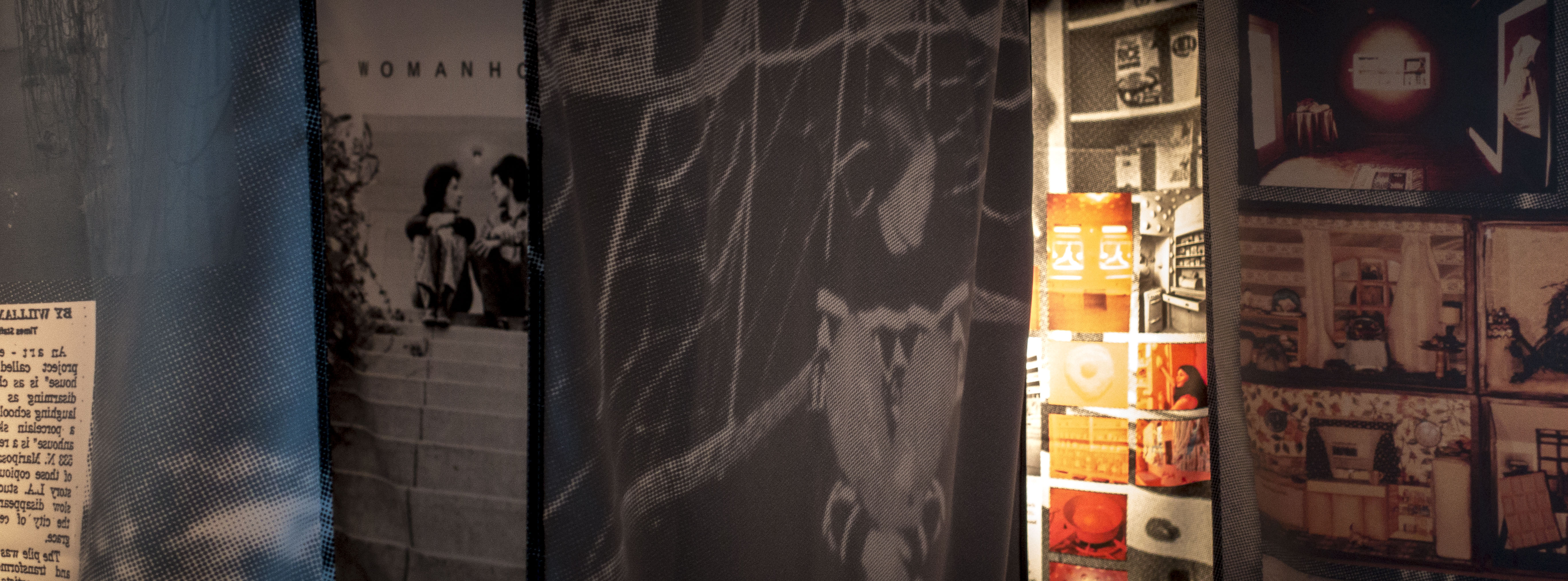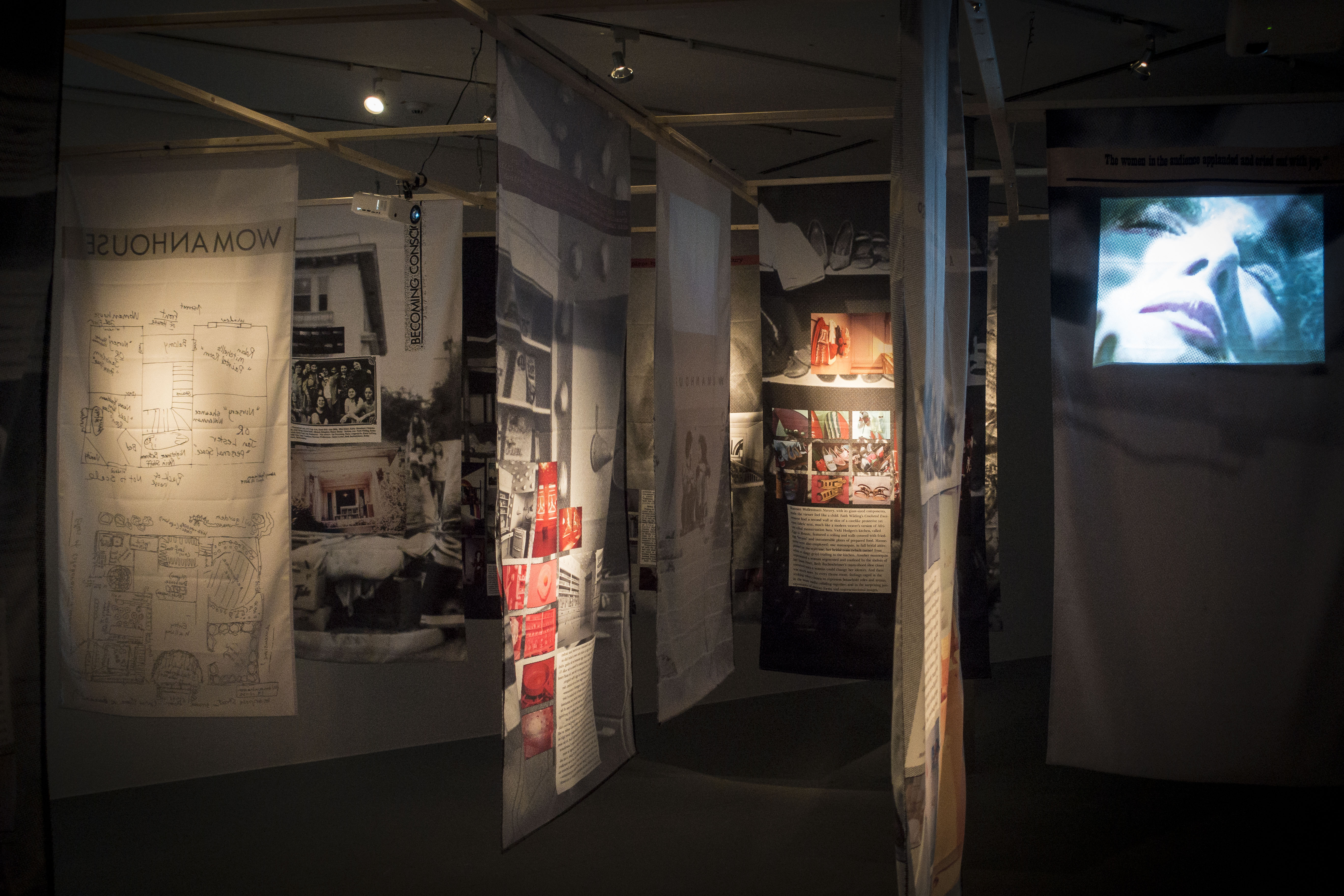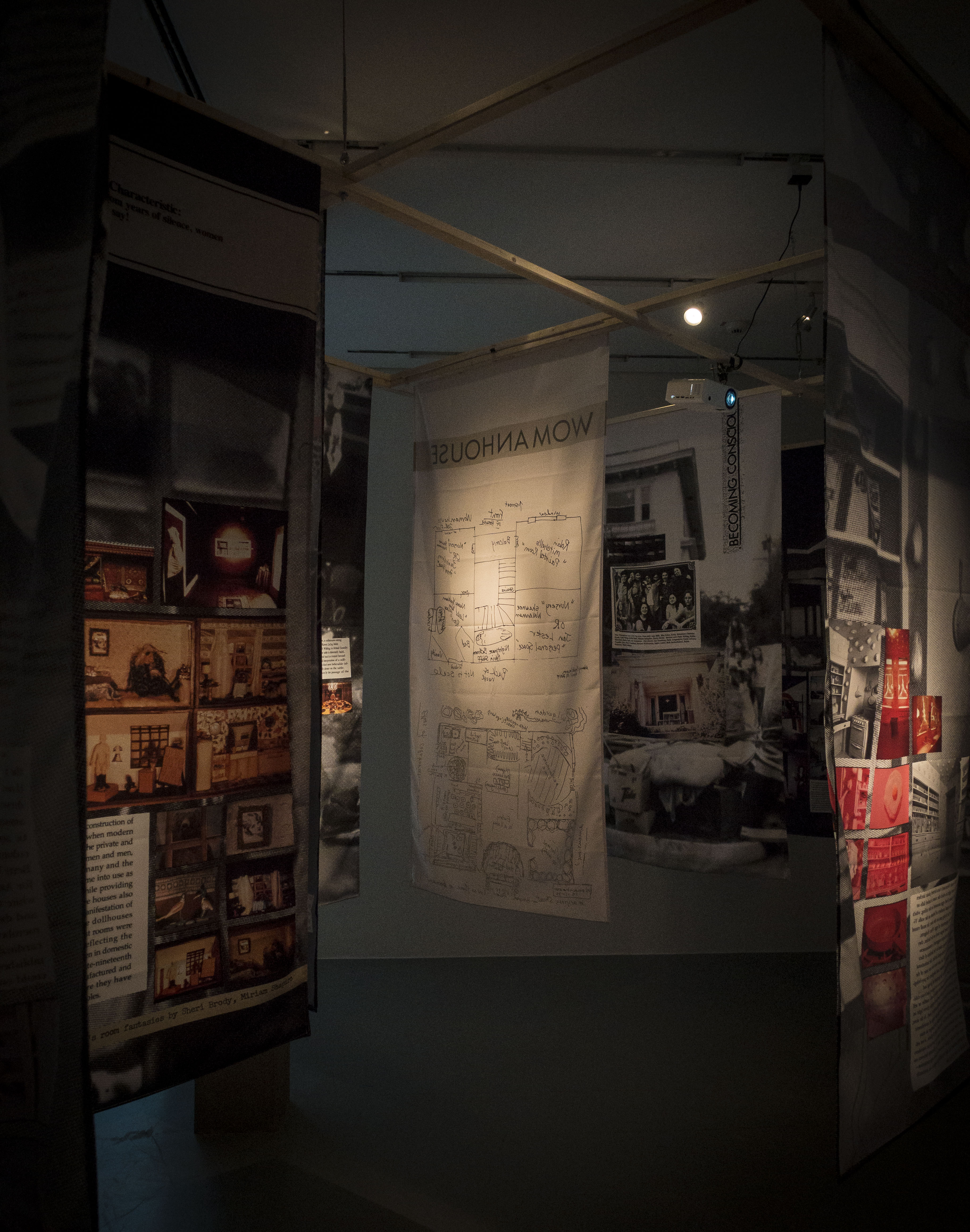Womanhouse (a memory theater)
Memory traces of “the daydreams that women have as they wash, bake, cook, sew, clean and iron their lives away … taken to fantasy proportions” (30/1/1970-28/2/1970)- Time
- –
- Location
- Hannover, Germany

This exhibit has moved to Kunsthaus Graz.
Developed by Kim Albrecht and Jeffrey Schnapp with Chiara Fauda-Pichet and Mindy Seu, this room-sized installation is part of the exhibition Wo Kunst geschehen kann – Die frühen Jahre des CalArts :: Where art might happen: The early years of CalArts, which opened at the Kestnergesellschaft in Hannover, Germany on August 30. (The exhibition runs through November 10, 2019.)
The Feminist Art Program at CalArts was barely three months old when, in November 1971, work commenced on Womanhouse: the program’s inaugural exhibition project. From the start, provisionality, process, teaching by example, conversation, happenings, live performances were its touchstones. Action (not memory), provocation (not permanence) were the values that Womanhouse sought to hurl not centripedally at CalArts but centrifugally at the city of Los Angeles and at the world beyond. The choice of venue was a run-down mansion slated for demolition in East Hollywood some 34 miles from the CalArts’s sparkling new Valencia campus. After months of student and teacher sanding, wallpapering, painting, plastering, and installing, this repurposed domestic space opened to the public between January 30th and February 28, 1972 and garnered more than its share of attention from the public and press. After closing, it faded into the collective memory as “a precedent.”
Womanhouse was never intended as a destination. Rather, it was devised as a momentary place of passage towards a new social and institutional order, where the “repository of daydreams that women have as they wash, bake, cook, sew, clean and iron their lives away” could be “taken to fantasy proportions”; a place of convening where women artists in the making could hang their work alongside that of more established artists; and a laboratory where the feminist future could be incubated in the very space where patriarchal tenets continued to find their firmest hold: the household. Repositories of daydreams leave only the frailest of documentary trails and Womanhouse is no exception. So, in spatializing its memory, the team relied upon both its media remains and on maps drawn from memory by participating artists of the home’s floor plan nearly a half century later. The result is not a reconstruction, but rather an evocation built out of historical documents and present memories.





